Verge designs
Our waterwise verge plans for Perth and the South West region provide the blueprint for creating various designs that can help you save water in the garden whilst also creating a beautiful green space for your street. Below are our favourite verge designs using plants that are waterwise and easy to maintain. For each garden design type, we’ve included plans from different perspectives – the front façade and a corner view.
Coastal verge design
Suitable for relaxed, coastal houses, this design divides high shrubs and groundcovers.
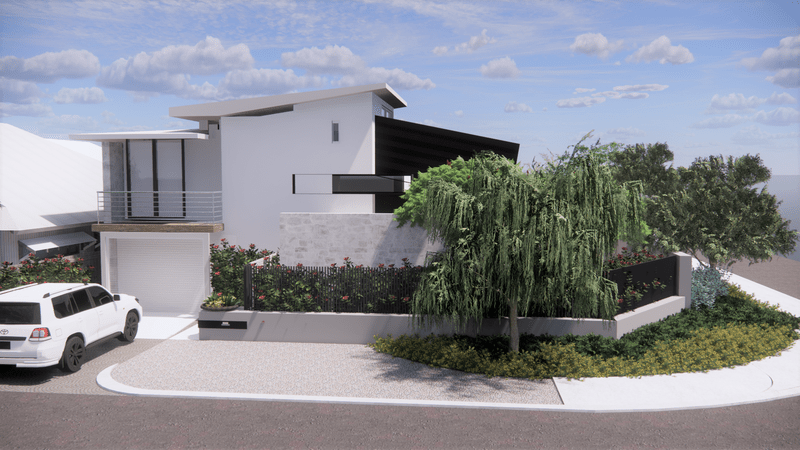
Front coastal verge design view.

Corner coastal verge design view.
Download the coastal verge design and shopping list.
Contemporary verge design
This design is suitable for residents looking to complement a more modern house.
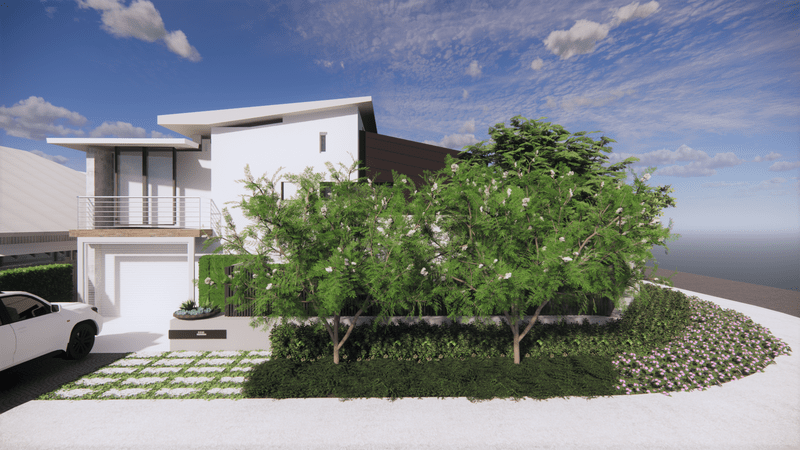
Front contemporary verge design view.
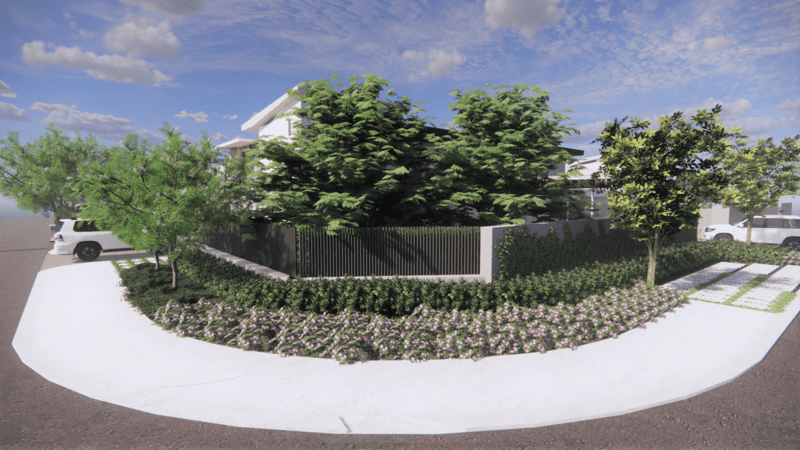
Corner contemporary verge design view.
Download the contemporary verge design and shopping list.
Formal verge design
Suitable for traditional houses, this design organises plants neatly and creates a hierarchy from road to residential boundary.
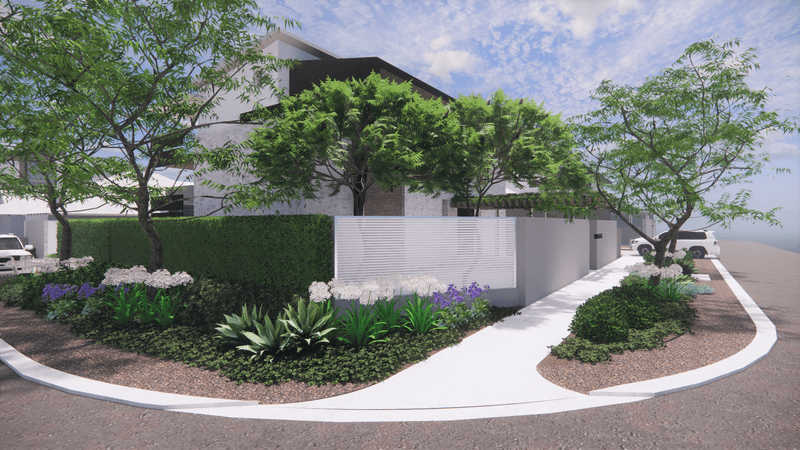
Front formal verge design view.
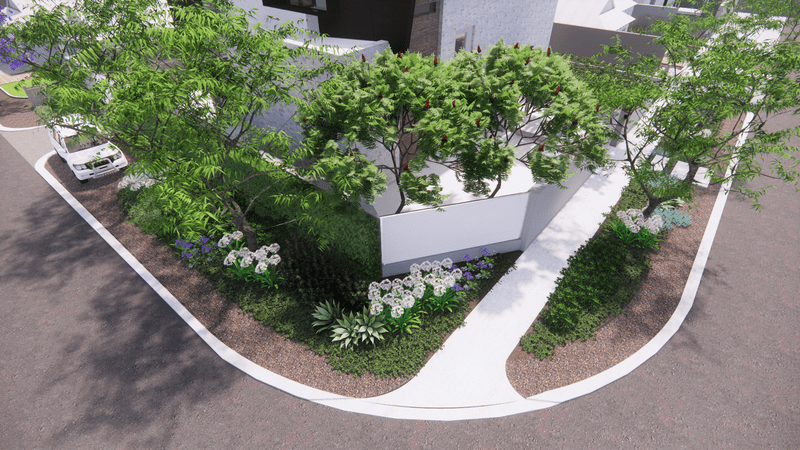
Corner formal verge design view.
Download the formal verge design and shopping list.
Informal verge design
This design is suitable for residents who wish to create an informal, cottage style verge landscape.
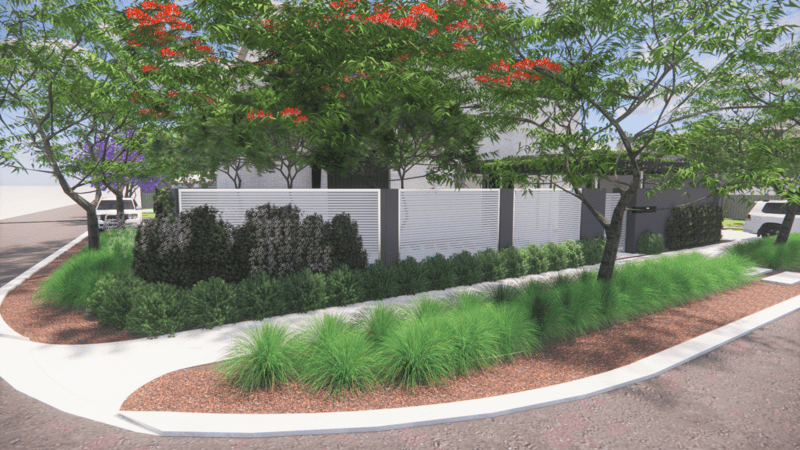
Front informal verge design view.

Corner informal verge design view.
Download the informal verge design and shopping list.
Identify your soil type and improve its quality
Sandy soil
Sandy, water repellent soil has water pooling on top of the surface around plants, rather than sinking in. It’s gritty and won’t clump, even when wet.
Before planting, incorporate bentonite clay and organic compost or soil-wetting agents into the top layer of soil. Always water in wetting agents until they foam. This means they are activated and doing their job.
Clay soil
Clay soils often become waterlogged in winter due to a lack of drainage. It’s sticky when wet and can be rolled into a ball. Adding organic matter and gypsum is recommended to help open the soil structure and improve drainage and oxygen levels.
Stony soil
Ironstone gravels and stony soils may have visible rocks on the surface or can be found under a thin layer of sand. They are often compacted and water-repellent, with water pooling on top of the surface. Remove large rocks and unearthed stones if possible and apply soil-wetting agents and organic matter to improve fertility.
Existing turf removal
The best time to remove existing turf is at the end of winter or the start of spring. For the fastest result, spray existing turf with Glyphosate and follow-up the application within 2-3 weeks’ time.Remove existing turf and topsoil to a minimum 150mm depth. This will remove turf roots and allow for soil preparation and mulching so the finished levels will remain slightly below paths and kerbs.
Soil preparation
The best time to do soil preparation is in autumn or spring. Clear the area of weeds, rocks, and debris. Scrape back topsoil, so you have room for soil amendments, compost and mulch (100-150mm below the adjacent kerb or footpath level).Aerate any compacted areas by digging with an aerator, rotary hoe, shovel or strong fork before planting so that roots can push through the soil and get access to air, water, soil and nutrients. Test the soil pH to identify the soil type.
Spread the selected soil amendments based on the soil type before spreading compost to ensure healthy plant growth. Decomposed animal manure, worm farm residue, bagged soil improvers and soil conditioners are good sources of compost. Soil improver, soil conditioner and soil concentrate are all interchangeable soil amendments.
Thoroughly mix the compost and soil amendments into the top 300mm of soil for optimal results. If you’re aiming to improve the soil of an established garden bed, apply improver to the surface area and lightly mix it into the soil with a hoe or rake and hand water well.
Before Planting
Transporting leafy trees in open trailers or utes can result in severe wind damage. Use a cover or go slow. Ensure plants aren’t exposed to drying influences such as sun or wind for an extended period. Thoroughly water all plants before planting.Space the planting out according to their recommended spacing, which is based on their maturity size. For example, if a plant will grow to 1m wide, ensure plants are spaced 1m apart to allow sufficient space for the plant to grow to its maximum size. Alternatively, plants can be evenly set out to fill the designated area. The maximum growing size is listed on the plan above. @1m/c means the plant will grow to 1m wide.
Planting & Mulching
It’s important to plant trees before shrubs. Dig planting holes at least twice as wide as the diameter of the pot. You can choose to add slow-release fertiliser to the planting hole to give plants a boost for the first year, however, it’s best practice to minimise fertiliser additives to reduce the impact on the natural waterways.If your soil is native/good quality (holding water/nutrients), you can do without fertiliser.
Ease the plant out carefully trying not to disturb the root ball, then lightly tease the roots before placing the root ball in the hole. Once the plant is placed in the hole, the top of the roots or root ball should be level or slightly below the surrounding surface to be able to create a bowl effect directing water to the plant.
Backfill the hole with the original soil or clean topsoil and tamp down gently then water in well to eliminate air pockets. Excess soil may be used to build a ring just outside the drip line to ensure water spraying on the foliage is captured and directed to the roots.
Spread waterwise organic mulch or ‘cut and drop’ prunings in established gardens to an even layer of minimum 50mm to supress weeds. Keep clear of the plant stem by 50mm or up to 500mm of tree trunks. Water in well again after mulching.
Stake trees and large shrubs if needed. Use 50 - 70mm diameter and 2m long stakes. Drive them 400mm into the ground and tie plants with rubber ties.
Watering
A typical suburban block will thrive on irrigation - 2 watering days per week in summer and once a week during spring and autumn.When establishing a new lawn or garden, you can ensure it gets the best chance to establish itself by applying for a watering exemption to keep the soil moist. Once your garden is established, you will need to abide by the watering roster. Check the recommended watering schedules on the website.